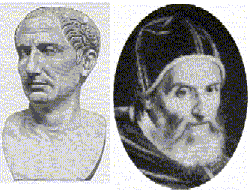Actually quite good
- Cut a watermelon into slices (for best results, use a melon that's not overly ripe).
- Cut the rind off the pink portion and cube the flesh.
- Soak the watermelon cubes overnight in brine made by dissolving 2 Tbsp. of pickling salt in 1 qt. water.
- In the morning, drain the brine off the melon cubes.
- Put a dill head and stem (or a couple of teaspoons of dill seed) in each quart jar. If you desire, also add a hot pepper (chili) and whole allspice and/or mixed pickling spice to each quart.
- Bring to a boil 1 cup white vinegar, 2 cups water, and 1/2 to 1 cup granulated sugar (try the smaller amount first and increase the amount if you decide you like your watermelon pickles sweeter).
- Pour the pickling solution boiling hot over the melon in the jars, filling them to 1/2 inch of the top of the jars.
- Wipe the rims and seal the jars with sterilized lids and rings.
- Process in a boiling water bath for 15 minutes, just long enough so the contents won't ferment. (If you process the pickles too long, they will be too soft.)
Getting in a pickle
See all Topics


